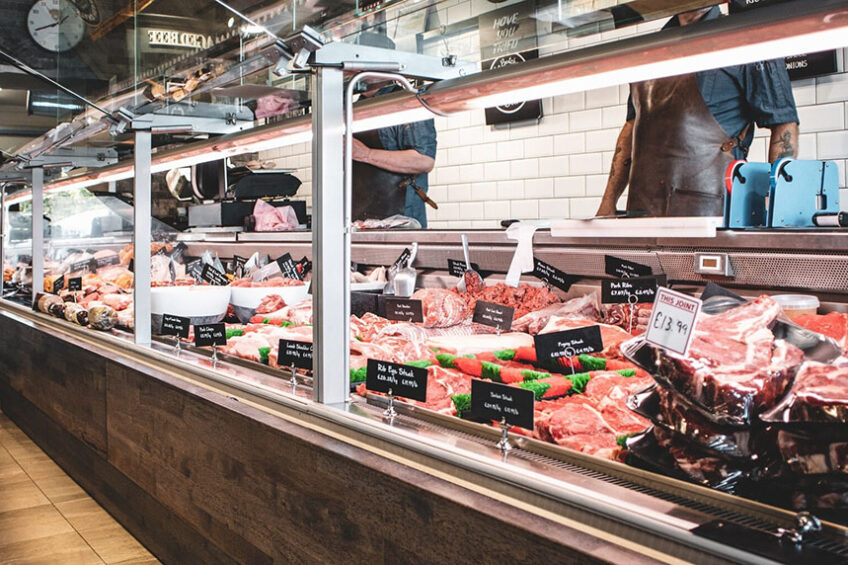Global Animal Protein Outlook for 2022

Continued growth in animal protein is expected to take place this year, albeit at lower levels, with growth in pork, poultry and aquaculture markets across Brazil, North America, China and Southeast Asia.
Demand and prices will remain strong, but there will be ongoing challenges posed by higher labour, freight and energy prices, according to experts at Rabobank.
Justin Sherrard, global strategist animal protein, told a recent RaboResearch podcast there were 5 things that had categorised the animal protein market during 2021:
- Food Service – the importance of continuity in the light of the ongoing Covid-19 pandemic.
- Biosecurity – how African Swine Fever, avian influenza and atypical BSE across different parts of the globe had continued to impact production and trade.
- Trade – Disruptions with port closures due to Covid-19.
- Sustainability – the year saw the UN Food Systems Summit and COP-26 with a driving focus to reduce emissions by 2030 and the animal protein industry responding in a structured way, i.e., the establishment of the Global Roundtable on Sustainable Beef goals.
- Price – with a couple of exceptions, high prices had been seen during 2021.
Turning to this year, Sherrard said the most important thing was how to manage cost pressures across the supply chain with inflation in a couple of areas – what and how could be passed on and what should be held back on in terms of input costs.
The 3 most important are:
- Labour – An ongoing structural issue.
- Freight – Cost pressures during 2021 were high and looking at 2022 will be really challenging.
- Energy – Energy prices across the globe are increasing.
Other issues included African Swine Fever – very important in terms of production and consumption – and sustainability. Sustainability will be an issue over a number of years rather than just 2022.
“No strangers to challenge”
But despite the challenges, Sherrard said animal protein and supply chains were no strangers to challenge: “We’ve seen plenty in the past and will see plenty more in the future. These will start testing our leadership skills – how well we read the market, how good our relationships are with our suppliers and our customers, and how we manage those issues.”
Container costs 50% higher…
Angus Gidley-Baird, senior analyst animal protein Rabobank, said labour costs in Australia continued to be an issue but freight was perhaps a very big issue due to the large number of exports. Container costs were 50% higher than this time last year. Travel times were also proving problematic.
Genevieve Steven, Rabobank agriculture analyst, said sustainability was an issue facing both business and consumers. Companies such as Nestle, Danone and Tyson Foods had committed to net-zero carbon targets and that would certainly have an impact in 2022 as global frameworks were developed.
Production growth
Sherrard said one of the most important aspects would be the continuation of the pig herd recovery and pork recovery in China, although not of the same nature as the 10 million tonnes growth seen during 2021. This will slow but be the biggest change driver across regions and species.
Cultivated meat is transforming food production
Expanding the cell lines for the growing cultivated meat market is continuing to receive financial support with an additional £1 million granted to Roslin Technologies from UK Research and Innovation (UKRI). Read more…
Poultry growth would continue across the globe, he added, and aquaculture is also set for another good year. However, there will be a beef contraction in terms of availability in global markets in 2022 of about 1 million tonnes.
US market
Commenting on the US market, Sherrard said the strongest growth in terms of production would be in the poultry sector due to increasing consumer demand and a stronger food service sector as the country moves out of Covid restrictions.
At the other end of the spectrum is the beef market, with the herd in decline during 2022 with cow slaughter numbers already going down, which may open up some exports from Australia and New Zealand.
The pork sector was more confusing with some processing constraints and uncertainties around exports. Production is expected to be up a little but generally the sector was hard to read.
 Beheer
Beheer





 WP Admin
WP Admin  Bewerk bericht
Bewerk bericht